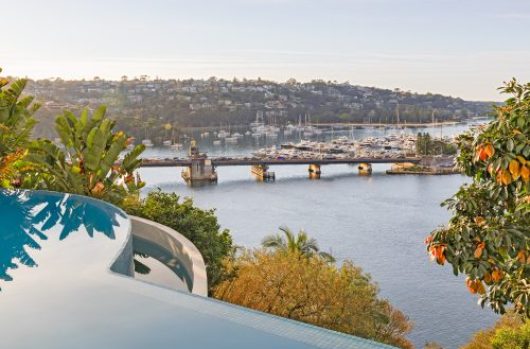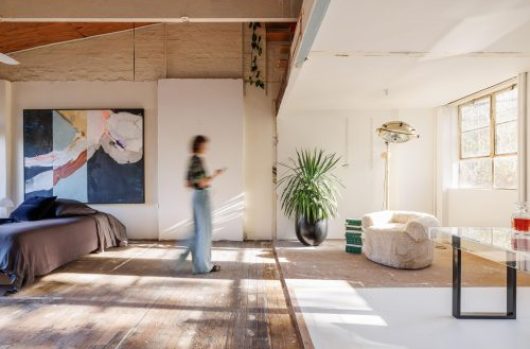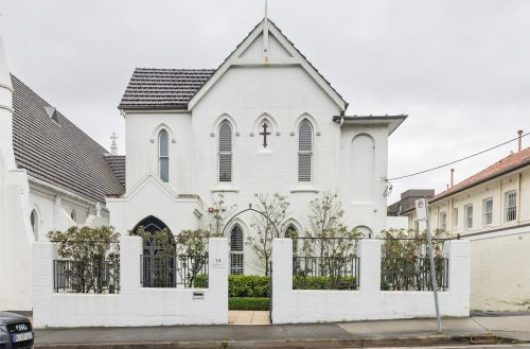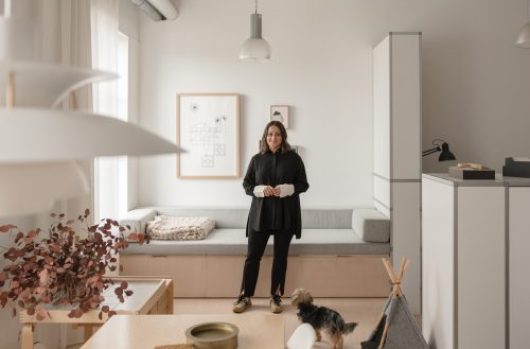Knock out round: Hospitality
No matter which city you are in, “risk equals reward” when it comes to high-end hospitality, according to interiors designer at The Gentry Kelly Ross. “A vibrant small bar scene is now springing up in Sydney. This will come to rival Melbourne’s but it is not there yet,” says Ross.
Working with bars and venues The Gentry has noticed that Sydney is late to the table with small bar culture and cutting-edge design due to draconian liquor laws that used to prevent small venues from serving alcohol. Now that those laws have been relaxed, Sydney is playing catch up. In terms of design it is certainly easier for new bar owners to take creative risks on a small footprint than a really large one.
“The rise of the scene here has created a buzz of DIY bar design, coupled with a recognition how design can really make you stand out from the crowd,” Ross says.

“The feel in Melbourne and Sydney right now is very warm, textural and layered. Colour and art are ever important,” she says. “The reform of the old fashion licensing laws have dramatically impacted the hospitality scene in Sydney,” says Ross who is currently working on bar designs for a new Stitch (whiskey, shirt and coffee bar) at Barangaroo, Joe’s Bar a Milanese inspired bar in Canberra and the interiors of a high-end warehouse residence in Surry Hills.
In Sydney, design is well integrated into the food and beverage offering. Examples like The Grounds in Alexandria, the Paramount Coffee Project in Surry Hills and Deus Ex Machina in Camperdown all show an exemplary approach to coffee. Yet architect Nick Harding says the trend of hospitality brands working with graphics agencies, has really been led by Melbourne.
“In 2014 it became clear to me that the Melbourne architecture and design scene is now at a point that you can not open a hospitality venue without it being seamlessly architecturally and brand designed. I think we must be almost the only city in the world that does this so unrelentingly. I do not think this is sustainable long term. I am waiting for the bubble to burst and for Melbornian’s to relax,” he says.
“The Lucas Group in conjunction with Projects of Imagination have delivered the pinnacle of this culture in Melbourne over the past few years,” Harding says.
Chloe Lanser at Projects of Imagination has worked on the likes of Moon Under Water and Supernormal in Flinders Lane. “Supernormal is a different experience for most hospitality in Melbourne, and the deli project Yardmill tried to reimagine what an Australian vernacular deli is, rather than importing a European aesthetic. But we still have a lot more way to go and this relies on clients’ willingness to push categories.”
“I don’t think either city is currently more progressive, I think both cities have very different urban situations which result in very different urban designs and architecture. It is hard to compare the two cities, they operate in fundamentally different ways,” Lanser says.
Projects of a ground-breaking attitude are hard to name in Sydney. Firms like Luchetti-Krelle have traditionally led the charge and been able to break the mold. Recent projects like their Acme, Potts Point and Campos Coffee Dulwich Hill are really beautiful examples of a fresh approach to smaller venues. Humphrey & Edwards Architects have also recently performed a lot of cool and classic fit such as Chiswick at The Gallery and China Diner in Bondi where they worked with Adam Yazxhi from Maxco.

When it comes to mixed-used developments Paramount House Coffee Project has been a great addition to lower-surry hills. PCP sits on the lower ground of the old Paramount House Building in Surry Hills. It combines retail, cafe, cinema and commercial creative suites on the upper floors. The rooftop is also currently being designed by Herbert Mason.
“Rather than pushing the boundaries I think repurposing places and spaces in our cities is more interesting,” say Alex Ritchie of experiential design firm e2.
“There is true innovation at the moment where businesses such as hospitality and retail work together with city planners to create destinations that increase demand through providing alternatives in how we shop, live work and play,” Richie says.
Ritchie sites The Grounds in Alexandria and the Carriageworks precinct as good examples of that philosophy at play. “There is no sense pushing the boundaries for pushing sake. Pushing the boundaries in design without truly understanding what customers want can be an expensive mistake,” says Alex Ritchie.


.
While most agree that Melbourne is the most progressive city in terms of design and architecture to date, all agree that Sydney is gaining on her fast, with thoughtful investment in all the right places. As The Design Writer Penny Craswell insists, the design scene in both cities is still relatively young and in need continual support and encouragement from our local and state governments.
“State run initiatives are extremely important. While architecture and design can exist and thrive in the economy without government support, they must be promoted city-wide and community-wide. This means festivals, exhibitions, books and other government funded programs, but importantly, other advocacy-related initiatives such as getting architecture and design into the syllabus at schools, ensuring copyright law protects designers and local councils give architects the opportunities to be creative,” says Craswell.
Jump to:







